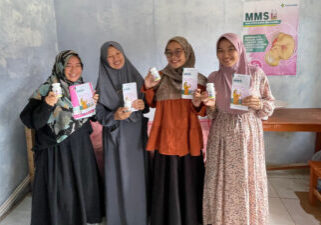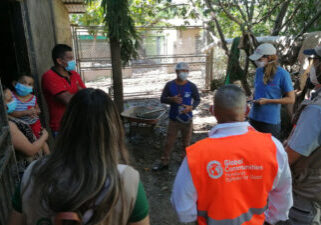News > Blog
Facilitating a More Enabling Environment
Published 07/13/2018 by Global Communities

This post was written by Karla Yoder, Economic Development Specialist at Global Communities and originally appeared on Feed the Future Agrilinks
As market systems development practitioners, we take a holistic approach to project implementation. Our value chain projects address market constraints at many levels including within the enabling environment. However, the focus of our facilitation efforts often remains on value chain relationships perhaps due to the need to achieve rapid and easily quantifiable results. While sector strategy development or policy reform efforts take time, they can be more effective than facilitating new market relationships in attaining the sustainable impact we are looking for. As implementers, we must have the information and ability to identify those opportunities and the flexibility to take advantage of them.
The Agribusiness Investment for Market Stimulation (AIMS) project, funded by the U.S. Department of Agriculture, promotes trade in important agricultural sectors in Kenya, Tanzania and Malawi by increasing access to finance and markets for agricultural small and medium enterprises (A-SMEs). AIMS uses business to business (B2B) forums to facilitate increased and more structured trading relationships, access to more markets for A-SMEs and improved supply for large firms and exporters. In Tanzania, where A-SMEs have limited awareness of and access to trading networks, these forums address a major constraint. The B2B events have seen large numbers of buyers and sellers signing indicative trade agreements with a high rate of actualization later.
In Malawi, the situation is different. During the market assessment phase, AIMS found that subsectors like horticulture were not yet structured enough for B2Bs to offer great value, and so changed tactics. The team saw an opportunity to improve the policy environment for horticulture, engaging key private sector stakeholders to come together and advocate for improved government recognition and support, resulting in the development of a horticulture policy now being shared for public input. Through this process, stakeholders got to know one another and became more organized, developing the Horticulture Farmers Cooperative of Lilongwe (HOFACOL), leading to new avenues for developing the subsector.
In contrast, the dairy sector in Malawi is highly structured. Dairy farmers are organized into milk bulking groups (MBG). Most of the MBGs supply their milk to processors which have structured trading relationships with distributors. Due to these existing formal trading systems, B2B linkages were also unlikely to add much value in this sector. However, through analysis the team recognized that a challenge hindering growth of the dairy sector in Malawi is the lack of a legal and regulatory framework. To address this, AIMS staff facilitated the establishment of a National Dairy Sector Steering Committee, chaired by a private sector actor, which is now developing and championing a sector strategy and advocating for the removal of the VAT on dairy products with the parliament.
Lessons Learned
The AIMS experience demonstrates the need for implementers to be simultaneously flexible and targeted in planning and implementing activities to address market constraints. Market assessments identifying the unique constraints of specific sub-sectors are key in determining whether the facilitation of direct market linkages between suppliers and buyers will be more effective in increasing trade or whether broader sub-sector organization and advocacy may need to take place first. Our staff and partners must be empowered and flexible in adapting approaches to the context, inclusive of enabling environment-focused activities in which they may be less experienced. Finally, we should remain in our role of facilitators, supporting activities for which market actors have the interest and motivation to take the lead.






